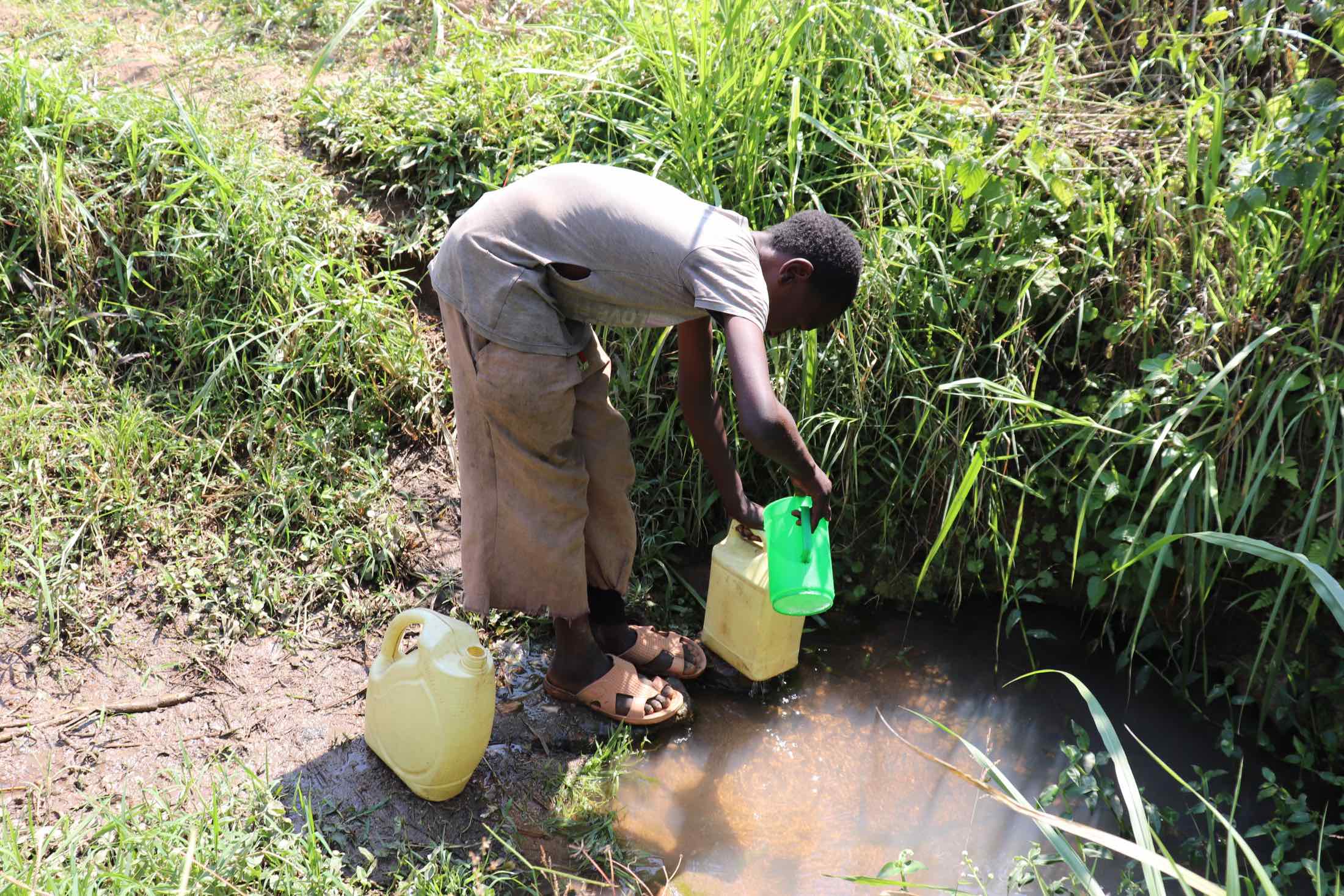The people of Emulele village get water four times a day on average: in the morning, during lunch hours, and also in the evening. Some of the farther-away villagers need to walk 30 minutes to the waterpoint each way, lugging heavy jerrycans.
"What I don't like, among all the house chores, is fetching water," said Loice O., a ten-year-old student who lives in Emulele. "This is because our water point is so muddy and slippery that it's is very easy to fall down. This makes me [have a confrontation] with my mother when she finds out that I haven't fetched water."

People also waste a lot of time waiting for the water to clear after another person has finished: the sediment needs to settle to the bottom before the water looks clean. However, just because the water looks clean doesn't mean that it is. Soil erosion, human activity, runoff, and animals are major pollutants.
"My children have had visits to the hospital due to typhoid," said Fanice Opati, a 45-year-old local farmer (and the source of the spring's name). "The doctors insisted on [us] having and using clean water. This makes me go the extra mile of boiling drinking water and buying treatment agents such as Water Guard to help in having quality water. It is very tiresome and hectic to maintain this, because at times I find myself having no money."
Financial constraints are the major reason for consuming the unsafe water. A lot of people's money is used in medication instead of helping the community members to develop themselves.
Emulele village is very rural, which makes the land excellent for farming. Crops are sold in the nearby shopping center at wholesale price. Other community members sell tomatoes, onions, and sardines from the nearby river.
However, Emulele's rural location means that its roads are unpaved (and treacherous in the rainy season), which makes it harder to reach the local hospital when the water makes people sick.
What We Can Do:
Spring Protection
Protecting the spring will help provide access to cleaner and safer water and reduce the time people have to spend to fetch it. Construction will keep surface runoff and other contaminants out of the water. With the community’s high involvement in the process, there should be a good sense of responsibility and ownership for the new clean water source.
Fetching water is a task predominantly carried out by women and young girls. Protecting the spring and offering training and support will, therefore, help empower the female members of the community by freeing up more of their time and energy to engage and invest in income-generating activities and their education.
Training on Health, Hygiene, COVID-19, and More
To hold trainings during the pandemic, we work closely with both community leaders and the local government to approve small groups to attend training. We ask community leaders to invite a select yet representative group of people to attend training who will then act as ambassadors to the rest of the community to share what they learn. We also communicate our expectations of physical distancing and wearing masks for all who choose to attend.
The training will focus on improved hygiene, health, and sanitation habits in this community. We will also have a dedicated session on COVID-19 symptoms, transmission routes, and prevention best practices.
With the community’s input, we will identify key leverage points where they can alter their practices at the personal, household, and community levels to affect change. This training will help to ensure participants have the knowledge they need about healthy practices and their importance to make the most of their water point as soon as water is flowing.
Our team of facilitators will use a variety of methods to train community members. Some of these methods include participatory hygiene and sanitation transformation, asset-based community development, group discussions, handouts, and demonstrations at the spring.
One of the most important issues we plan to cover is the handling, storage, and treatment of water. Having a clean water source will be extremely helpful, but it is useless if water gets contaminated by the time it is consumed. We and the community strongly believe that all of these components will work together to improve living standards here, which will help to unlock the potential for these community members to live better, healthier lives.
We will then conduct a small series of follow-up trainings before transitioning to our regularly scheduled support visits throughout the year.
Training will result in the formation of a water user committee, elected by their peers, that will oversee the operations and maintenance of the spring. The committee will enforce proper behavior around the spring and delegate tasks that will help preserve the site, such as building a fence and digging proper drainage channels. The fence will keep out destructive animals and unwanted waste, and the drainage will keep the area’s mosquito population at a minimum.

 Protected Spring
Protected Spring
 Rehabilitation Project
Rehabilitation Project
















